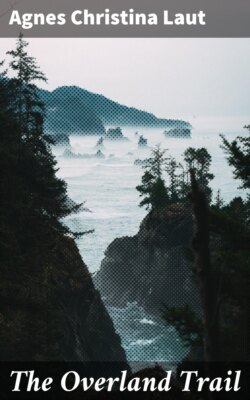Читать книгу The Overland Trail - Agnes Christina Laut - Страница 6
На сайте Литреса книга снята с продажи.
ОглавлениеTHE DEVELOPMENT OF THE OVERLAND TRAIL
Table of Contents
PART I—From the Missouri to the Rockies up the Platte
Table of Contents
Old Spanish Explorers (1510-1542)
Crossed the country toward the mouth of the Missouri before the voyages of Henry Hudson or Drake, or the Settlement on the James River were made. A Spanish stirrup of Coronado’s time was dug up in the streets of Omaha.
Lewis and Clark (1804-1806)
Made a scientific exploration commissioned by Jefferson; its results became important in the long quarrel between Great Britain and the United States over the latter’s claims to the Oregon country.
Astorians on the Way to or from the Pacific (1811-1813)
These were fur traders sent by John Jacob Astor to establish a post on the Pacific Coast.
Missouri Fur Traders (1816-1840)
Adventurers from St. Louis who came up by the Platte and Three Forks after the Astorians surrendered, to fight the Hudson’s Bay men for the rich furs.
Later Exploring Parties (1842-1848)
The most noted were those of Frémont “the Pathfinder” in 1842 and 1843. Frémont camped at Independence Rock, and from there went on to the ascent of Frémont Peak in August, 1842.
Pioneer Movements West (1835-1856)
Missionary, led by Dr. Whitman (1835-1843); Mormon, led by Joseph Smith (1846 on); Santa Fé caravans, a trade movement at its height in the late forties and early fifties; the California Gold Stampede which in one year (1849) raised the population of California from six thousand to hundreds of thousands; the Oregon fever (1847 to 1856) caused by hard times.
Military Occupation (1823 to present)
From Col. Leavenworth’s expedition against the Aricara Indians in 1823 through the eras of migration overland and railway building down to that of Howard against the Nez Percés in 1877, the army was called on to guard the trail. The Fetterman and Wagon-Box fights took place near Fort Kearney in 1866 and 1867.
Rail Pioneers (1856-1893)
Long and hazardous surveying preceded the era of actual roadbuilding in the sixties. The Union Pacific advertised in 1868: “track laid and trains running within ten miles of the Rockies.”
